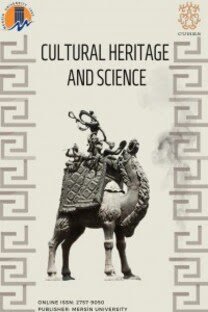Research on the change of Ankara Ulus City Center identified with its historical texture
Research on the change of Ankara Ulus City Center identified with its historical texture
When we look at the history of the city centers, it is seen that these centers were formed around an important religious structure, a special structure or an administrative structure. City centers are cultural spaces that mirror the culture of that city and build bridges between the past and the future. At the same time, these centers are an important place of the city and contribute to the identity of the city. These centers, which form the core of the establishment of cities, have changed over time and have altered. Changes and transformations in these centers, which give the city an identity, continue regardless of the historical value of the place. As a protection issue in this article; the problems brought by the reorganization of historical city centers are discussed. In the article, the changes in the square in the Ulus Historical City Center, the Temple of Augustus, which is a Roman monument, and the Hacı Bayram Mosque, which is an Ottoman Period monument-, are examined.
Keywords:
Conservation Ulus Historic City Center, Change,
___
- Dinçer, İ. (2013). Thinking Conservation and Renewal Together While Transforming Cities: The Possibilities of the Concept of “Historical Urban Landscape”. International Journal of Architecture and Planning, 1(1), 22–40.
- Ahunbay, Z. (1996). Historic Environment Conservation and Restoration. Yapı Endüstri Merkezi, İstanbul. Yapı Endüstri Merkezi İstanbul.
- Luxen, J. L. (2004). Reflections on the Use of Heritage Charters and Conventions.
- https://www.arkitera.com/haber/guzel-sehir-ilkeleri-kardes-sehir-roma-ankara/
- Tunçer, M. (2019). Unprotecteable Cultural Heritage: Hacı Bayram Mosque and Augustus Temple Perimeter. Ankara: Gazi Bookstore Publications.
- Lefebvre, H. (1998). Everyday Life in the Modern World. İstanbul, Metis Yayınları
- Tunçer, M. (2020). Foundation Bedesten and Inns in Ankara (15-20th century). Ankara, Gazi Bookstore Publications
- Şenyapılı, Ö. (2004). What does Ankara mean? Balgat, why Balgat. METU Publishing.
- Bilkent (2021). The Remnants Of Roman Ancyra.
- https://turkishmuseums.com/museum/detail/1946-ankara-augustus-tapinagi/1946/1
- https://tr.wikipedia.org/wiki/Hac%C4%B1_Bayram_Camii
- https://www.kulturportali.gov.tr/turkiye/ankara/gezilecekyer/haci-bayram-camii
- Texier C (1849). Asie Mineuere. travelogues.
- Cantek, L. (2003). Wilds and natives. Ankara in the process of becoming the capital. İstanbul.
- Günel, A., & Kılcı, A. (2015). Ulus Square. Journal of Ankara Studies, 3/1, 83.
- VEKAM. (2021). Library and Archive. Koc University.
- Yayın Aralığı: Yılda 2 Sayı
- Başlangıç: 2020
- Yayıncı: Mersin Üniversitesi
Sayıdaki Diğer Makaleler
Research on the change of Ankara Ulus City Center identified with its historical texture
Architectural sustainability with cultural heritage values
Edirne New Palace excavations (2018-2021)
Yavuz GÜNER, Gülay APA KURTİŞOĞLU
Systematic analysis of the digital technologies used in the documentation of historical buildings
Fatma Zehra ÇAKICI, Rabia KAÇDİ
Exploring structural deterioration at historical buildings with UAV photogrammetry
